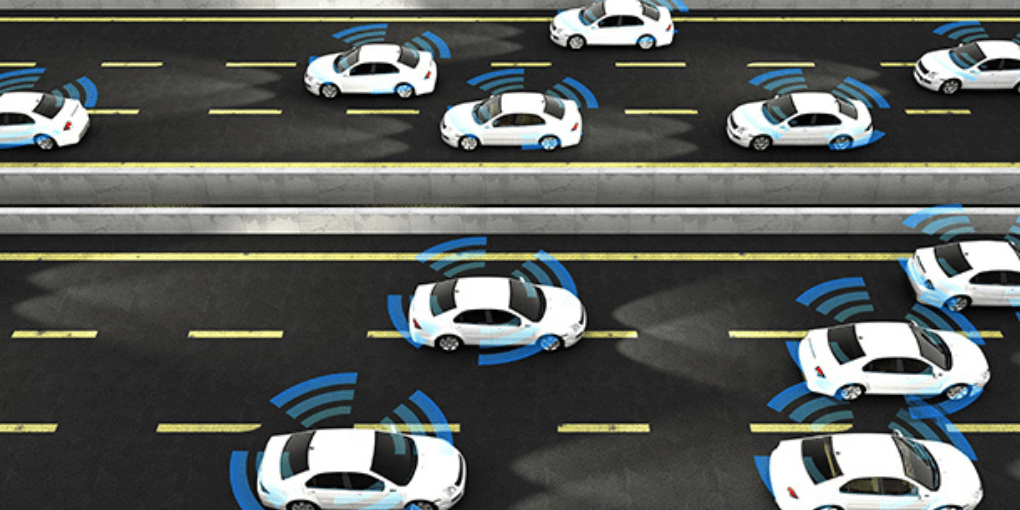Self-driving cars, also known as autonomous vehicles, can operate without human intervention, using a combination of technology and sensors to navigate and drive on their own. 
These cars have the potential to revolutionize transportation, offering improved safety, efficiency, and convenience.
The key component of self-driving cars is the use of artificial intelligence (AI), which allows vehicles to continually analyze and make sense of their surroundings, enabling them to make real-time decisions.
Through various sensors such as cameras, radar, lidar, and GPS, self-driving cars gather data about road conditions, other vehicles, and pedestrians.
This data is processed by the AI system, which then determines the appropriate actions for the car to take.
The AI system can interpret complex traffic situations, recognize traffic signs, respond to pedestrian movements, and navigate through diverse environments.
Technology Behind Self-Driving Cars
The technology behind self-driving cars involves a combination of sensors, artificial intelligence (AI), and advanced computing systems. Here are the key components:
Sensors
Self-driving cars have various sensors that allow them to perceive and understand their surroundings.
These sensors typically include cameras, radar, lidar, and ultrasonic sensors.
Cameras provide visual input, while radar and lidar sensors measure distance and detect obstacles.
Ultrasonic sensors help to detect nearby objects and aid in parking maneuvers.
AI and Machine Learning
The AI algorithms and machine learning models enable self-driving cars to interpret the information gathered by the sensors and make decisions in real-time.
Deep learning and computer vision algorithms are used to analyze the sensor data, recognize objects such as pedestrians, vehicles, and traffic signs, and predict their behavior.
The more these models are exposed to real-world data, the better they become at making accurate decisions.
Mapping and Localization
Self-driving cars rely on highly detailed and up-to-date maps, known as high-definition (HD) maps, which include lane markings, traffic signs, and other important information.
Using GPS, sensors, and odometry (measurements of wheel movement), the self-driving car determines its position on the map, providing accurate localization and navigation.
Control Systems
Once the perception and decision-making components process the information, control systems take over to execute the commands.
These control systems manage the steering, acceleration, and braking of the vehicle based on the decisions made by the AI algorithms.
These systems ensure that the vehicle operates safely and remains within acceptable performance limits.
Connectivity
Self-driving cars often have built-in connectivity to communicate with other vehicles, infrastructure, and cloud-based systems.
This connectivity allows them to share information about road conditions, traffic, and potential hazards to enhance safety and optimize routing decisions.
Safety Considerations in Self-Driving Cars
Safety considerations in self-driving cars are of utmost importance and need to be addressed thoroughly to ensure the well-being of passengers, pedestrians, and other road users. Here are some key safety considerations:
Error Detection and Redundancy
Self-driving cars should be equipped with multiple sensors, such as cameras, lidar, radars, and ultrasonic sensors, to ensure accurate perception of the environment.
Having redundant sensors helps to minimize the risk of errors or failures in sensor systems.
Robust Cybersecurity
Self-driving cars are vulnerable to hacking and cyber-attacks.
Implementing strong cybersecurity measures, such as encryption, secure communication protocols, and software updates, is crucial to prevent unauthorized access to the vehicle’s systems.
Fail-Safe Mechanisms
In the event of a system failure or malfunction, self-driving cars should be equipped with fail-safe mechanisms to ensure that the vehicle can safely come to a stop or take control over from an autonomous mode to a manual mode.
Safety Testing and Standards
Rigorous testing procedures and established safety standards should be followed during the development, manufacturing, and deployment of self-driving cars.
These standards can help identify potential risks, evaluate the performance of autonomous systems, and ensure compliance with safety regulations.
Risk Mitigation Strategies
Self-driving cars should be equipped with advanced algorithms and artificial intelligence systems that continuously monitor the vehicle’s surroundings and predict potential hazards.
These technologies can aid in risk mitigation by making timely decisions to avoid collisions or dangerous situations.
The Impact of Self-Driving Cars on Society
The impact of self-driving cars on society can be far-reaching and transformative.
Here are some key areas in which self-driving cars may have an impact:
- Safety: One of the main advantages of self-driving cars is the potential to significantly reduce accidents caused by human error. With advanced sensors and AI systems, self-driving cars have the potential to make roads much safer by eliminating factors such as distracted driving, drunk driving, and speeding.
- Traffic Congestion: Self-driving cars have the potential to improve traffic flow and reduce congestion. With the ability to communicate with other vehicles, they can optimize speed and coordination, leading to more efficient traffic patterns. They can also reduce the need for excessive parking spaces by utilizing shared mobility platforms.
- Accessibility: Self-driving cars have the potential to provide greater mobility options for those who are physically unable to drive, such as elderly individuals or people with disabilities. This can lead to increased independence and quality of life for a wider range of individuals.
- Environment: The use of self-driving electric vehicles can contribute to reducing carbon emissions and improving air quality. By optimizing routes and minimizing idling times, self-driving cars can operate more efficiently, thereby reducing energy consumption and environmental impact.
- Economy: The rise of self-driving cars can have a significant impact on various industries. It can lead to job losses in sectors such as transportation, taxi services, and delivery services, as these jobs may become automated. However, it can also create new job opportunities in areas such as vehicle maintenance, software development, and data analysis.
Benefits of Self-Driving Cars
Self-driving cars offer several benefits that have the potential to transform transportation. Here are some of the key advantages:
Improved safety
Self-driving cars are equipped with advanced sensors, cameras, and AI technology, allowing them to constantly monitor their surroundings and make split-second decisions to avoid accidents.
As human error is a common cause of accidents, the increased reliability and vigilance of autonomous vehicles can lead to a significant reduction in road accidents and fatalities.
Increased efficiency
Self-driving cars have the potential to improve traffic flow and reduce congestion.
With connected systems and smart algorithms, these vehicles can communicate with each other and optimize routes, speeds, and lane changes.
This can lead to shorter travel times, reduced fuel consumption, and decreased emissions.
Enhanced accessibility
Self-driving cars can provide transportation options for individuals who are unable to drive due to age, disabilities, or other reasons.
This increased accessibility can improve the quality of life for people who may have limited mobility options, enabling them to travel independently and engage in various activities.
Reduced traffic and parking space requirements
As self-driving cars have the potential to communicate and coordinate with each other, traffic flows can be optimized, reducing congestion on roads.
Additionally, with the rise of ride-sharing services using autonomous vehicles, fewer cars may be required, leading to a reduction in the need for parking spaces.
Productivity and convenience
Self-driving cars free up time for passengers, enabling them to utilize travel time more efficiently.
Commuters can work, read, or relax during their journey, as they no longer need to focus on driving.
This can result in increased productivity and improved quality of life.
Challenges and Limitations of Self-Driving Cars
While the future of self-driving cars looks promising, it also comes with its fair share of challenges and limitations. Here are some key factors to consider:
- Technical limitations: Despite advancements in technology, self-driving cars still face challenges in handling unpredictable situations on the roads. Factors like adverse weather conditions, construction zones, and complex traffic scenarios can be difficult for AI systems to navigate effectively.
- Regulatory challenges: Developing and implementing regulations and policies for self-driving cars is a complex task. Governments need to establish rules regarding liability, safety standards, data privacy, and cybersecurity to ensure the safe and responsible use of these vehicles.
- Public acceptance: The general public may have concerns about relinquishing control to autonomous vehicles. Issues of trust, reliability, and human-machine interaction need to be addressed to gain widespread acceptance and adoption of this technology.
- Ethical considerations: Self-driving cars are programmed to make split-second decisions in dangerous situations. These decisions may involve ethical dilemmas, such as choosing between the safety of passengers or pedestrians. Establishing a framework for handling these ethical considerations is a significant challenge.
- Cost and infrastructure: The technology required for self-driving cars can be expensive, making them less accessible for some individuals or regions. Additionally, the infrastructure needed to support autonomous vehicles, including specialized road markings, sensors, and communication systems, will require substantial investments.
Future of Self-Driving Cars
The future of self-driving cars is promising and holds the potential to revolutionize transportation as we know it. Here are some key aspects to consider:
Enhanced safety
Self-driving cars have the potential to significantly reduce accidents caused by human error.
With advanced sensors and artificial intelligence, these vehicles can continually monitor their surroundings, detect potential hazards, and make split-second decisions to avoid accidents.
Increased efficiency
Self-driving cars have the potential to improve traffic flow and reduce congestion.
With smart algorithms and connected systems, these vehicles can communicate with each other and adapt their speed and route to optimize traffic patterns.
This can lead to shorter travel times, reduced fuel consumption, and lower emissions.
Accessible transportation
Self-driving cars can provide mobility to underserved populations, including the elderly and people with disabilities.
These vehicles can offer greater independence and freedom for those who may have difficulty driving or using public transportation.
Changing business models
The advent of self-driving cars may disrupt traditional car ownership models.
Ride-sharing services could become more prevalent, with self-driving cars providing a convenient and cost-effective means of transportation.
This could potentially reduce the need for individual car ownership, leading to a decrease in the number of cars on the road.
Regulatory challenges
Despite the potential benefits, the widespread adoption of self-driving cars faces several regulatory challenges.
Governments and regulatory bodies will need to develop appropriate legal frameworks, safety standards, and guidelines to ensure the safe operation of these vehicles on public roads.
Conclusion
The rise of self-driving cars marks a significant advancement in the automotive industry.
With their potential to revolutionize transportation as we know it, autonomous automobiles have captured the attention of both consumers and industry leaders.
Despite the current challenges and concerns surrounding their implementation, such as safety regulations, ethical dilemmas, and job displacement, the benefits they offer cannot be ignored.
Self-driving cars have the potential to enhance road safety, reduce traffic congestion, and improve fuel efficiency, subsequently contributing to a more sustainable and efficient future.
The convenience and increased productivity that these vehicles offer individuals are undeniable.
However, it is essential for policymakers, manufacturers, and society as a whole to address the ethical and social implications that accompany this technological shift.

Sudatta is a passionate automotive enthusiast and expert in the field. With a keen eye for detail and a love for all things automotive, he shares insightful articles and reviews to ignite the automotive passion in readers.



